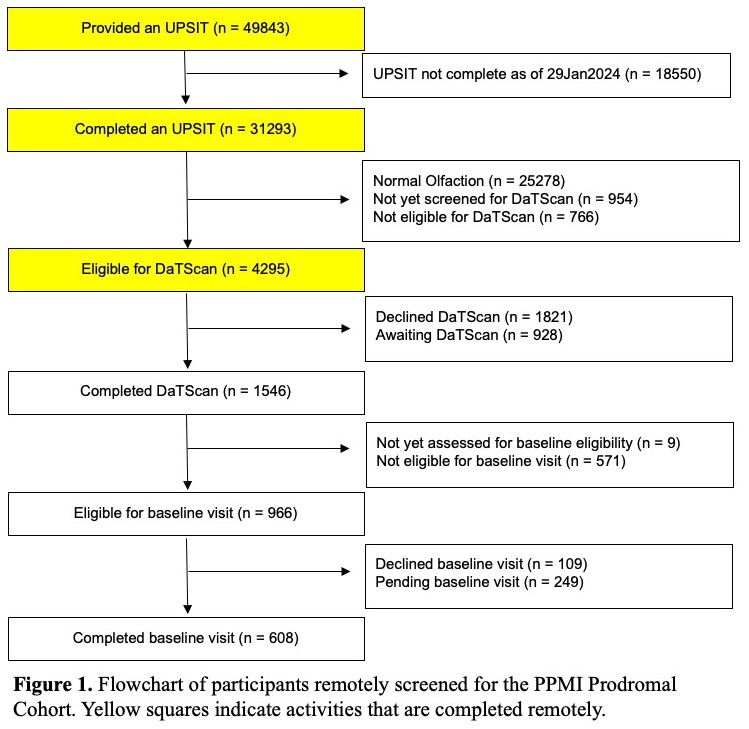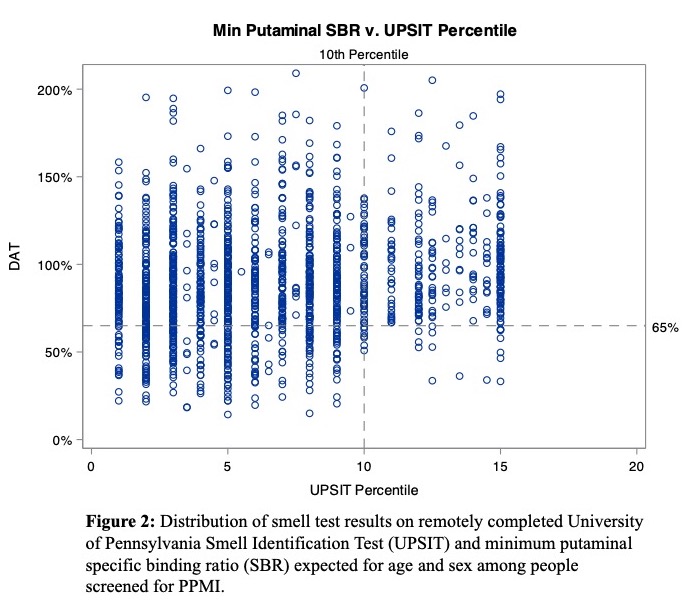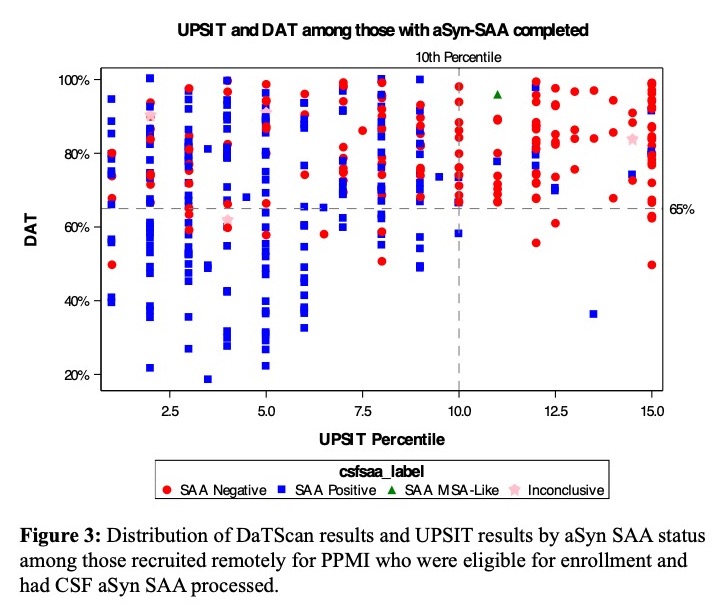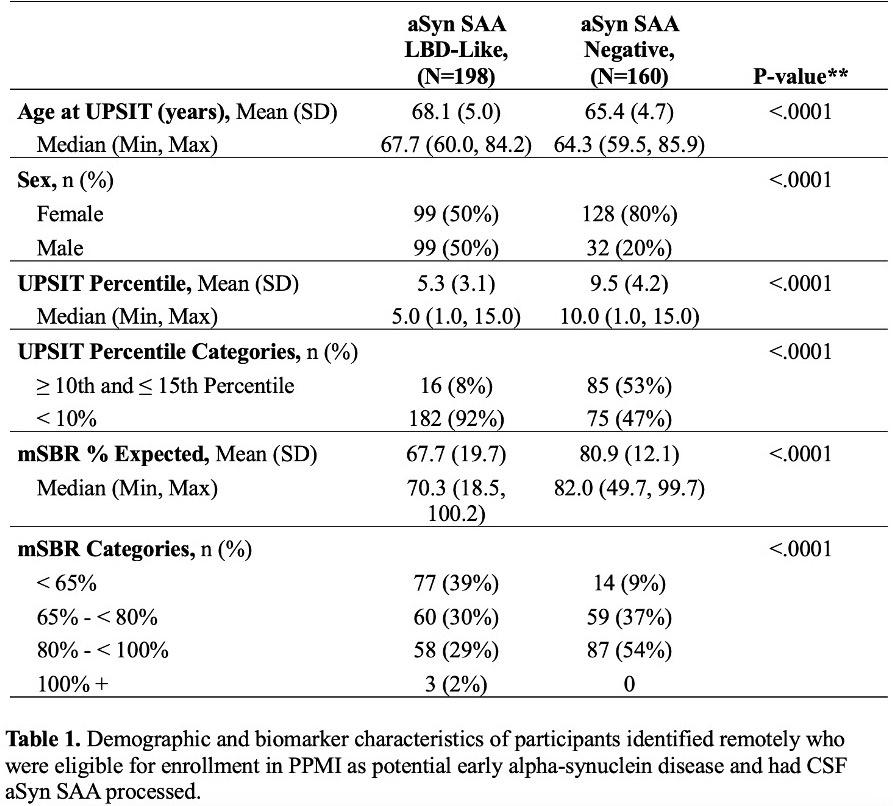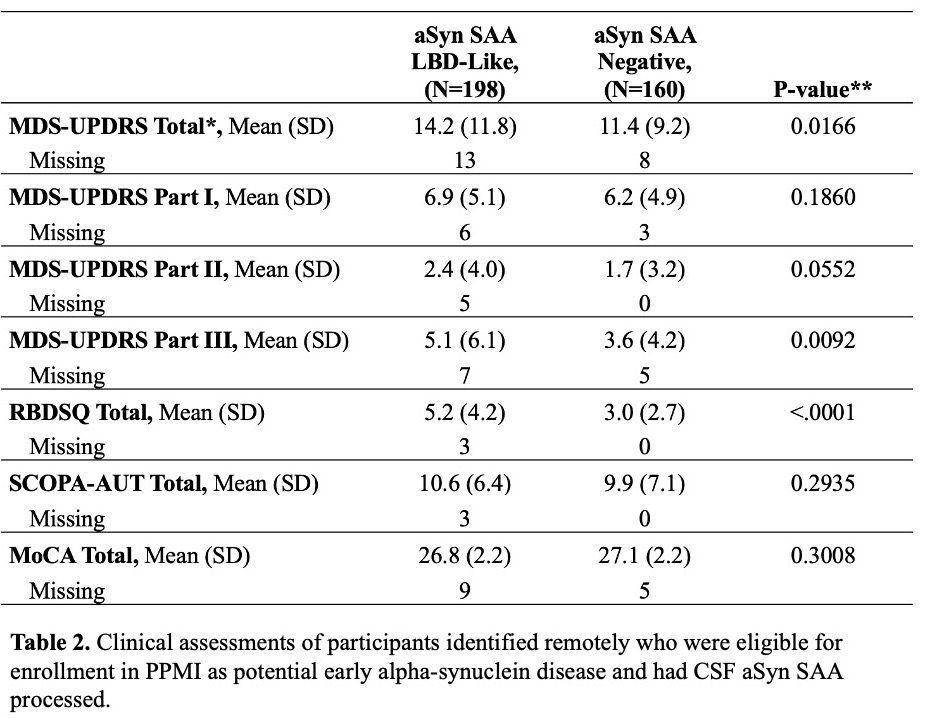Category: Parkinson’s Disease: Clinical Trials
Objective: To evaluate the proportion of people with dopaminergic deficit and positive alpha-synuclein seed amplification assay (aSyn SAA) among a remotely identified group of hyposmic individuals.
Background: Identifying people in the earliest stages of synucleinopathy may be essential for studies testing therapeutics to slow prevention. Remote screening of participants may allow for efficient recruitment of large cohorts with relevant biomarkers.
Method: The Parkinson Progression Markers Initiative (PPMI) implemented a staged screening protocol to identify people most likely to have a progressive alpha-synucleinopathy. People age 60 and older without a diagnosis of Parkinson’s disease (PD) were asked to complete the University of Pennsylvania Smell Identification Test (UPSIT) remotely. Participants with hyposmia were invited to dopaminergic transporter scan (DaTScan), and participants with a minimum putaminal specific binding ratio (mSBR) <100% expected for age and sex were invited to longitudinal observation, complete further biomarker evaluation – including cerebrospinal fluid aSyn SAA testing through Amprion – and undergo various clinical assessments.
Results: As of January 29th, 2024, 49,843 participants were provided an UPSIT remotely and 31,293 (63%) had completed them. Of those, 4,639 (15%) had an UPSIT < 10th %ile and 1,546 had been brought in for DaTScan [Figure 1]. Self-reported features obtained on a screening questionnaire were independently associated with an UPSIT <10th %ile, such as REM sleep behavior disorder (RBD) or dream enactment behavior (DEB) (aOR: 1.9, 95% CI 1.7 – 2.1) and problems with smell (aOR: 15.0, 95% CI 13.7 – 16.3). Participants with an UPSIT < 10th %ile had a higher odds of mSBR < 65% compared to participants with an UPSIT 10th – 15th %ile (OR 3.01, 95% CI 1.85 – 4.91) [Figure 2]. Among enrolled participants with aSyn SAA processed [Table 1], 198/358 (55%) had positive aSyn SAA, though this proportion increased when the cohort was limited to UPSIT < 10th %ile (182/257, 71%). Clinical measurements did not differ substantially between people with and without detectable aSyn SAA [Table 2].
Conclusion: Remotely identification of hyposmic participants can efficiently identify a cohort with a high proportion of biomarkers related to alpha-synucleinopathy. Refinement with screening questionnaires and stricter thresholds for hyposmia may improve efficiency further.
Figure 1
Figure 2
Figure 3
Table 1
Table 2
To cite this abstract in AMA style:
E. Brown, A. Siderowf, T. Simuni, T. Sherer, M. Brumm, C. Caspell-Garcia, R. Kurth, C. Gochanour, M. Marshall, M. Korell, C. Stanley, L. Concha, C. Soto, K. Marek, C. Tanner. Remote recruitment of hyposmic participants identifies biomarkers related to neuronal alpha-synuclein disease [abstract]. Mov Disord. 2024; 39 (suppl 1). https://www.mdsabstracts.org/abstract/remote-recruitment-of-hyposmic-participants-identifies-biomarkers-related-to-neuronal-alpha-synuclein-disease/. Accessed January 7, 2026.« Back to 2024 International Congress
MDS Abstracts - https://www.mdsabstracts.org/abstract/remote-recruitment-of-hyposmic-participants-identifies-biomarkers-related-to-neuronal-alpha-synuclein-disease/

